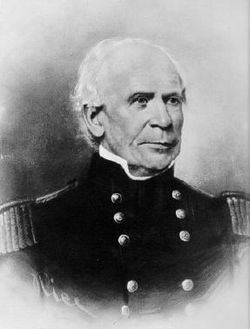Allegiance United States Rank Brigadier general | Name Thomas Jesup Years of service 1808–1860 | |
 | ||
Resting Place Oak Hill CemeteryWashington, D.C. Died June 10, 1860, Washington, D.C., United States Books Seminole Saga; the Jesup Report Similar People Osceola, Wild Cat, Richard K Call, Duncan Lamont Clinch, William J Worth | ||
Rock Hudson - " Seminole " Trailer - 1953
Thomas Sidney Jesup (December 16, 1788 – June 10, 1860) was a United States Army officer known as the "Father of the Modern Quartermaster Corps". His 52-year (1808-1860) military career was one of the longest in the history of the United States Army.
Contents
In 1836, Jesup was placed in command of all U.S. troops in Florida during the Second Seminole War. Jesup violated terms of truce in order to capture Seminole leaders Osceola and Micanopy, which provoked controversy. He was famously quoted as having said about the Seminole that "[t]he country can be rid of them only by exterminating them."
Biography
He was born in Berkeley County, Virginia (now West Virginia). He began his military career in 1808, and served in the War of 1812, seeing action in the battles of Chippewa and Lundy's Lane in 1814, where he was wounded. He was appointed Quartermaster General on May 8, 1818, by President James Monroe.
In 1836, while Jesup was still officially Quartermaster General, President Andrew Jackson detached him first to deal with the Creek tribe in Georgia and Alabama, and then to assume command of all U.S. troops in Florida during the Second Seminole War (1835–1842). His actions in violating truces to capture Seminole leaders, such as Osceola and Micanopy, provoked controversy. At the conclusion of the hostilities, Jesup returned to his official post.
During the Mexican-American War, Jesup traveled from his headquarters in Washington, D.C., to oversee the supplying of troops in Mexico. He served as Quartermaster General for 42 years, having the second longest continual service in the same position in U.S. military history (George Gibson served as Commissary General of the US Army for 43 years, from 1818 until 1861). He died in office in Washington, D.C., at age 72.
